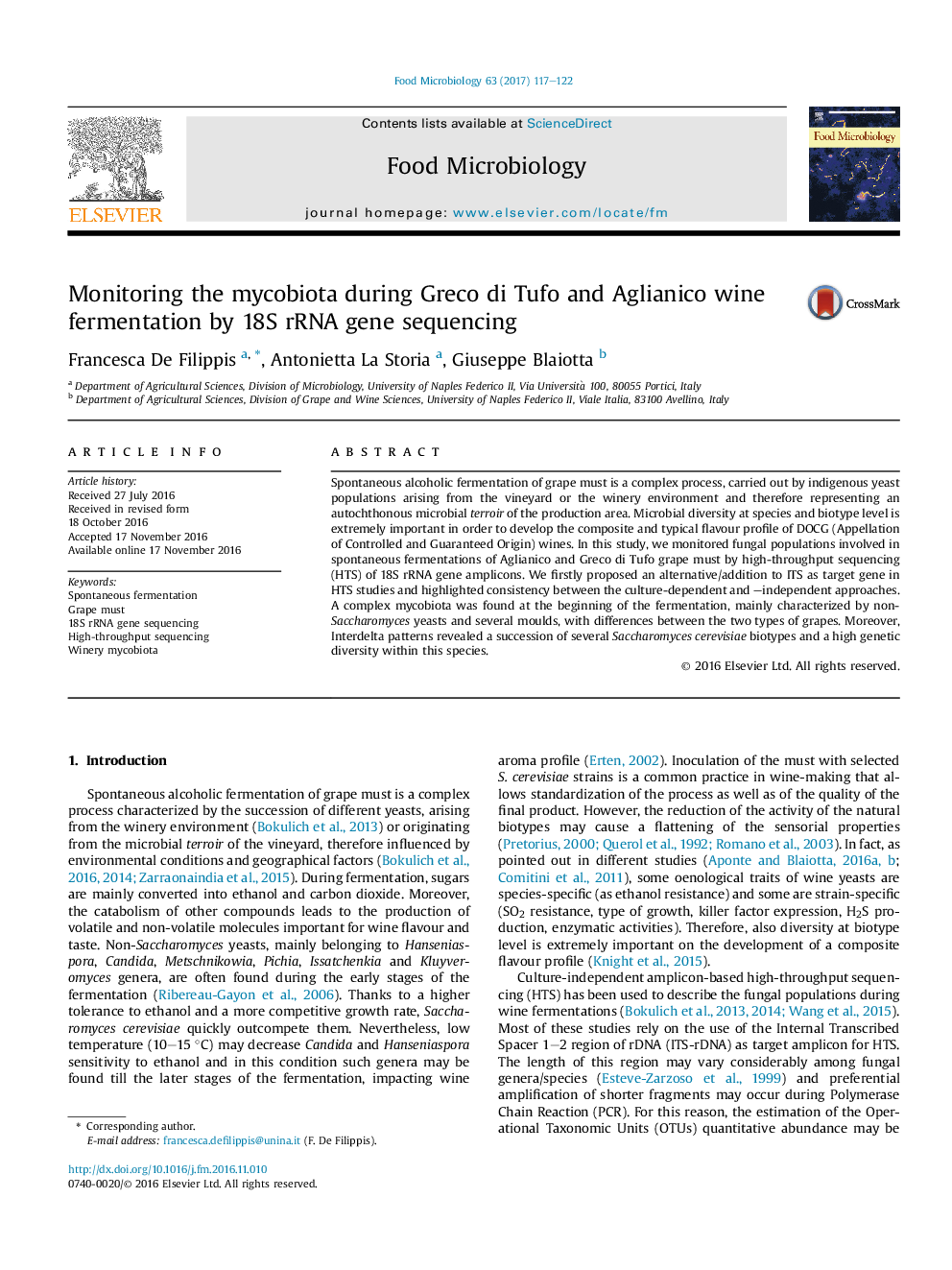| Article ID | Journal | Published Year | Pages | File Type |
|---|---|---|---|---|
| 5740176 | Food Microbiology | 2017 | 6 Pages |
â¢Spontaneous alcoholic fermentations of Italian DOCG grape musts were monitored.â¢Pyrosequencing revealed a complex mycobiota evolving during fermentation.â¢High diversity in Saccharomyces cerevisiae biotypes was highlighted.â¢18S rRNA gene revealed as a promising alternative to ITS in HTS studies.
Spontaneous alcoholic fermentation of grape must is a complex process, carried out by indigenous yeast populations arising from the vineyard or the winery environment and therefore representing an autochthonous microbial terroir of the production area. Microbial diversity at species and biotype level is extremely important in order to develop the composite and typical flavour profile of DOCG (Appellation of Controlled and Guaranteed Origin) wines. In this study, we monitored fungal populations involved in spontaneous fermentations of Aglianico and Greco di Tufo grape must by high-throughput sequencing (HTS) of 18S rRNA gene amplicons. We firstly proposed an alternative/addition to ITS as target gene in HTS studies and highlighted consistency between the culture-dependent and -independent approaches. A complex mycobiota was found at the beginning of the fermentation, mainly characterized by non-Saccharomyces yeasts and several moulds, with differences between the two types of grapes. Moreover, Interdelta patterns revealed a succession of several Saccharomyces cerevisiae biotypes and a high genetic diversity within this species.
